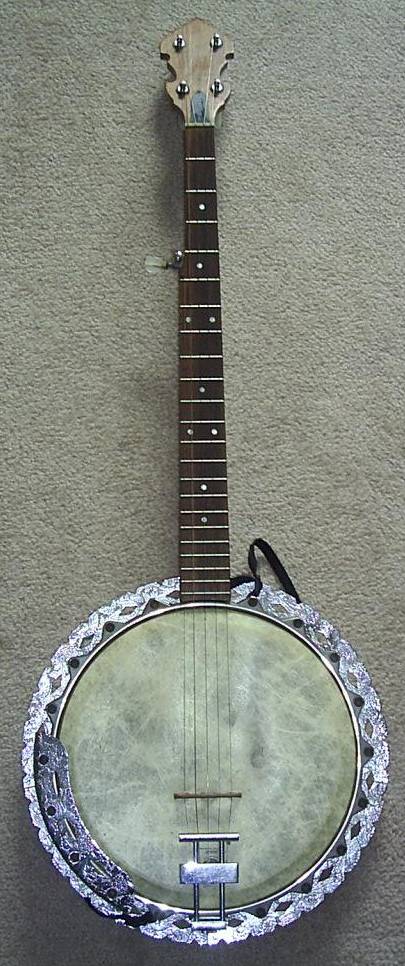![]()
"Tilt" neck tuning for optimum bridge placementThis step applies to the German-made Framus and Contessa banjos and also to some old openback banjos - this step does not apply to banjos with conventional bolted-on necks. So just to be absolutely clear: if you try this procedure on a regular banjo you WILL screw up your instrument, most likely totally beyond repair - don't even think of trying it!!! Again, if you don't have a Framus banjo - no do not do this not!!! |
| In case you're thinking coordinator rods can do the same
thing - wrong: they simply cannot move the neck up and down by as much as
this Framus type gizmo does. Don't go proving me wrong - you'll crack the
rim and/or neck beyond repair or worse. If you're thinking my old S.S.
Stewarts has a turnbuckle that can do the same thing - wrong: the heel of
the neck has been drying out for 100 years. Don't go proving me wrong on
this one either - you'll crack the heel and/or neck beyond repair. Did I
mention you shouldn't even think of considering to try to attempt this..?
OK, here we go - the necks of these Framus banjos are bolted onto an aluminum dowel stick. This dowel stick, instead of being bolted to the rim, is bolted into an adjustable housing gizmo. You notice that there is a space between the heel of the neck and the rim (much frowned upon by conventional making standards) and this clearance is needed to allow the neck to tilt/pivot up or down as needed. It's a breeze to change the neck angle on the fly if you want to use a taller or shorter bridge or to suit your playing hand/fingers. You do the adjustment by turning the bolt inside this little housing with an Allen wrench. Now here's the awesome advantage: it lets you fine tune the string length, or scale, to get the maximum sound with the same ease. Don't touch or turn anything yet, first make sure the bridge is in the proper location as described earlier. If the intonation is proper with a straight, non-compensated bridge, you're already there and you don't need to adjust the neck angle. If the intonation is off however, then here's another bonus - you only need to make sure the bridge is in the proper location going by the sound of the first string. Because you'll be adjusting the neck angle with the strings under tension, you might want to crank down all strings to get the banjo to a lower tuning, an open F or even down to E just to be safe. Read the following steps all the way through before touching anything:
Now that you've fine tuned the neck angle you'll find your banjo sounds better than ever before and your intonation problems, if you had any, have simply disappeared. Now is that cool or what... P.S. some, some as in very very very few, older banjos (usually open back models at that) may have a similar set up the way the neck is attached - look for a bracket with a long slot or something that looks totally adjustable, most likely with some kind of screw/bolt to secure the dowel stick position. If so, and only if so, you could consider following these same steps. |
 |
Above: an under the hood picture of the magic Framus neck angle adjustment bolt. On the left: my trusty Framus, or whatever's left of it. I bought it in the late seventies and still love playing it. One day, in the middle of the night actually, the head let go - it went off like a gun shot and woke up everybody in the house. The only thing I could find at the time was one of them wacky fyberskin jobbies that yellowed pretty good over the years. The neck is an oil-finished Saga, I just hated the original narrow neck (still parked in the basement somewhere). Yup, I love this crazy thing and use it for both three-finger and clawhammer styles. Not considered a great banjo by any means but you'd have to spend at least $600~800 (in 2010) to get a better sounding banjo than this archtop Nashville model and is well worth looking at if you spot one somewheres. Keep in mind, Framus did have some lower models and those are/were pretty disappointing sound wise. |
![]()
| home | picks | contact us | order | guest book | about/privacy | tell a friend | our facebook |